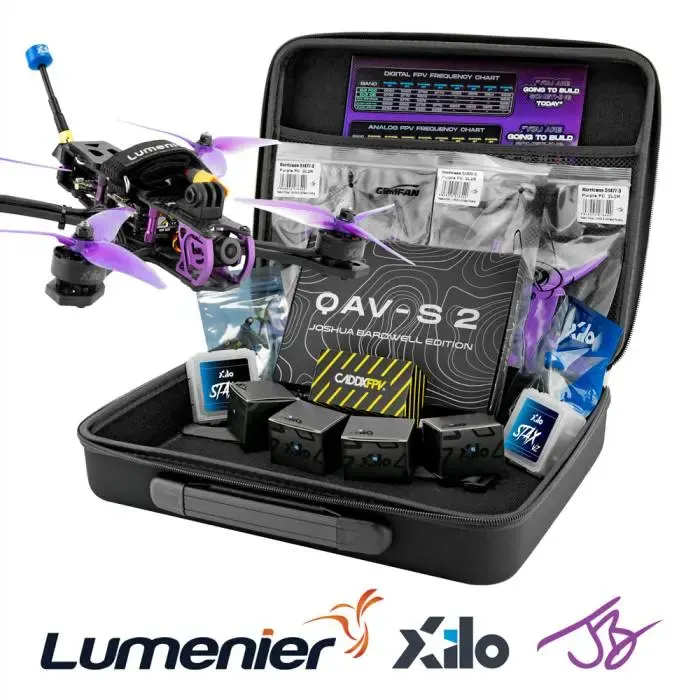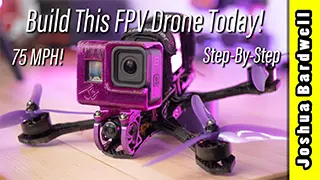Basically, all of the links on this page are affiliate links. I receive a commission (at no extra cost to you) if you make a purchase after clicking one of the affiliate links below. Read our Affiliate Link Policy for more information.
If this will be your first time ordering from Banggood, you should know a few things.
I created the JB Xilo Beginner Build kit to make it as easy as possible for you to build your first FPV freestyle quadcopter. I picked all the parts you’ll need so you know everything will be good quality and will work together. And I made a complete video tutorial taking you through every step of the build, all the way through the first test flight. This kit is available with both analog and DJI video system, depending on your budget.
Although the whole point of this kit is to learn to build it yourself, you might prefer to have GetFPV build a “bind-n-fly” version for you, so you can see how a pro would do it. There are links to both the DIY Kit and the Bind-n-Fly (BnF) version below.
IFLIGHT
NAZGUL EVOQUE F5 V2

The Nazgul Evoque is one of the most refined 5” freestyle quads you can buy. iFlight isn’t content to just make a fast, agile, and durable quadcopter. They make it feel like a Real Product, with molded plastic walls and LED lights built into the body. Little touches like an anti-spark device on the battery plug show that iFlight isn’t just building another “hobby-grade” quadcopter. They’re thinking about problems that pilots face and trying to solve them.
The downside of the Evoque’s refinement is that it’s a little harder to repair and maintain. The whole thing is carefully put together in exactly a certain way, and it’s kind of resistant to being any other way than iFlight made it. Some would say that the light-up side plates are just in the way, or another part to break. The light pipes going down the center of the arms make the Evoque a tiny bit less durable than some comparable frames.
The Evoque is available with either the DJI O3 video transmitter or an analog vTX and camera. The analog vTX has a whopping 1.6W of output power, so you’ll get plenty of range compared to competitors with weaker vTX.
The Evoque comes in either X geometry or D geometry. For pure freestyle goodness, we recommend the X geometry. The D geometry pushes the front motors out and back a little bit so that they’re not visible in the FPV camera. This is especially good if you’re using the O3 camera to record footage, and not just to see where you’re flying.
Find this product at these vendors:
GEPRC
MARK5

GEPRC might be best known for its Cinewhoops, but the Mark5 deserves way more attention than it seems to get. The frame balances light weight and durability perfectly and looks great too. The “squashed-X” geometry keeps propellers out of your FPV camera view without compromising balanced freestyle handling. 7075 aluminum front end protects the camera and doesn’t flinch at hard crashes. The metal front end also has a dedicated section so you don’t have to disassemble the whole top plate to add or remove an action camera.
GEPRC’s choice of motor surprised me at first: 2107.5 dimensions feel like numbers picked out of a hat for marketing purposes. But this slightly narrower, slightly taller motor actually performs amazingly! And durability was great in my (admittedly limited) testing.
Some manufacturers would cut corners on the props by shipping with a self-made copy of somebody else’s design. But GEPRC ships with legitimate Ethix S5 props – some of the best you can get.
GEPRC hasn’t skimped on the flight controller either. Their SPAN F722-BT-HD V2 even has built-in Bluetooth so you can configure it wirelessly from your phone.
The best part is that the GEPRC Mark5 is available with almost any video system you prefer analog, DJI O3, DJI v2, and even Walksnail! The analog version has a powerful 1.6W video transmitter, for maximum range.
Of all the bind-n-fly 5” freestyle quads on this list, the GEPRC Mark5 might be the truest to the pure 5” freestyle experience that comes from building your own quad. It doesn’t have the high-strung responsiveness of the AOS5, or the consumer-focused refinement of the Evoque. It’s just a great, all-round five-inch freestyle quad.
Find this product at these vendors:
Purchase at RaceDayQuads – Caddx Air Unit / DJI O3
Purchase at GetFPV – Caddx Vista / DJI O3
Purchase at NewBeeDrone – DJI O3
Purchase at Banggood – Analog / DJI O3
Purchase at GEPRC – Analog / Caddx Air Unit / Caddx Vista / DJI O3
Purchase at Amazon – Analog / Caddx Air Unit / Caddx Vista
VANNYSTYLE
BUILT AND TUNED BUNDLE HD

The “Vannystyle” is based on Alex Vanover’s signature frame. He’s known as one of the fastest racing pilots in the world, but he’s also an incredible freestyle pilot. The Vannystyle frame has 6mm arms for maximum durability and stiffness. The no-frills design of the quad keeps weight reasonable and makes for snappy, responsive flight. Alex’s motors have all the punch and power that a racing pilot would expect.
The biggest objection some people will have to the Vannystyle is its price. It’s way more expensive than some of the other quads on this list, and its specs are similar, or in some cases worse. This is because Vannystyle is hand-built by technicians in Orlando, Florida, with a custom PID tune designed by Vanover himself, and backed by Rotor Riot’s support. Some people will be willing to pay a premium for that; others won’t.
Find this product at these vendors:
IFLIGHT NAZGUL5 V3
ANALOG

The Nazgul was one of iFlight’s first 5” bind-n-fly freestyle quads. When they later released the Evoque, I was a little bit sad. The Evoque is polished and shiny, with molded plastic parts and LEDs. The Nazgul has a 30mm-sized FC and ESC, which I think are more durable than the 20mm size in the Evoque. And the light-pipes in the arms of the Evoque make them a bit less durable than the arms of the Nazgul.
As good as the Evoque is, some part of me resented the “consumer-ification” of the FPV hobby that I love. I’d browse stores every now and then to see when the last Nazgul would go out of stock. And then iFlight released a new version of the Nazgul: the v3! It’s not dead! It’s alive!!!!
Even if you don’t have the same attachment to Nazgul’s design as I do, you should be excited too. Because the Nazgul offers all the performance and durability that iFlight is known for, at one of the lowest prices available today. You can get something a little bit cheaper, but it’ll be a LOT worse. You can buy something more expensive, and it’ll only be a little bit better. Unless you want something REALLY specific out of a 5” bind-n-fly, the Nazgul is actually the one that’ll give the best value for money to the most people.
Find this product at these vendors:
IFLIGHT AOS 5 EVO
BY CHRIS ROSSER

iFlight makes some of the best bind-n-fly quadcopters. Chris Rosser makes some of the best frames. Put them together, and you’ve got something truly special. The AOS5 frame is designed to have the best possible resonance characteristics, which means you can PID tune them to the limit. But with the AOS5 BnF, you don’t have to, because Chris Rosser delivers the BnF with his perfect PID tune.
The electronics of the AOS5 BnF are iFlight’s standard fare, so you might ask why buy the AOS5 instead of the iFlight Evoque. The main reason is that the AOS5 is more of a stripped-down, pure freestyle machine, while the Evoque has a bit more polish (and flashy LEDs).
If the AOS5 frame has a weakness, it’s durability. It’s durable enough, but it’s not exceptionally durable. So if you fly mostly in grass and trees, and if you don’t crash a lot, the AOS5 is right up your alley. But if you fly concrete bandos and crash on asphalt, this frame will break sooner than most people would prefer. You should also be really careful about making sure the bottom screws are tight and/or add more blue loc-tite to them after you get the quad, because the screws seem to back out really easily for some reason.
Find this product at these vendors:
DARWIN240
JOHNNY5

The only reason this quad is on this list is because of its price. If it cost $50 more, I’d say buy the iFlight Nazgul5 instead. In fact, I might say that anyway if you’ve got the budget for the Nazgul5. Like most of Darwin’s quads, the Johnny5 offers a lot of “value for money”, but only because the “money” is cheap enough that you can afford it at all.
The Johnny5 feels like somebody found a bunch of quadcopter parts from 2019 in the back of a warehouse. In 2019, these parts wouldn’t have been cutting-edge, but they’d get you in the air. That’s still true today, although people who’ve been in the hobby will look at the Johnny5 like a Boomer wearing bell bottoms.
The only major deal-breaker about the Johnny5 is that the FPV camera has an extremely narrow field of view. The lens is zoomed-in. And you can’t zoom it out. So when you’re flying, you can only see in a narrow cone in front of you and it makes it very difficult to fly close to objects, which is of course exactly what FPV pilots like to do. I recommend that you replace the camera with something like the Caddx Ratel ($30-ish) or the Foxeer Arrow ($15-$20-ish if you can find it). Of course, this starts to eat into the price advantage of the Johnny5, which is unfortunate, because that’s the main way it justifies its existence.
Find this product at these vendors:
QAV-S2 5″ FREESTYLE FRAME
JOSHUA BARDWELL EDITION

I fell in love with the QAV-S because of the genius way its arms join to the frame, allowing for one-screw arm changes, without putting a weakening screw hole through the center of the arm. But there was a problem: the arms sometimes got wiggly, especially after taking a few crashes. V2 of the QAV-S fixes that with an innovative aluminum arm mounting mechanism. This is the only frame we’re aware of that applies lateral force to stabilize the arms, as well as sandwiching them between frame plates. And if the arms start to wiggle, you just tighten the screw a little and they’re good as new!
The QAV-S hits the sweet spot of being roomy enough to build with ease, without being so big that it compromises flight characteristics. It’s also relatively lightweight, but still tough enough for typical freestyle bashing. (If you are the hardest-core of concrete bando bashers, you might want a heavier and more durable frame.)
The QAV-S v2 also adds a metal front-end mounting that can fit almost any camera you might want to use, including the O3 air unit. The QAV-S does not soft-mount the camera, so those who want to use the O3’s stabilization feature may object.
As much as I loved the original QAV-S, there were a few things I changed to make the JB Edition. I requested a solid top plate for increased rigidity and strength; this also allowed the removal of one standoff. I shortened the standoffs to a 22m height. I thickened the front-bottom plate from 2mm to 3mm. Finally, I added a few notches to the tapered rear of the top plate, to allow a 2nd battery strap to be used without it sliding backward. All of these changes increased the frame’s strength and durability while keeping the overall weight below 125g, which I think is the sweet spot for great flight performance.
This frame will hold a Caddx Vista, O3, and Walksnail video transmitter, but not an original DJI Air Unit. HDZero Freestyle will just barely fit in the rear, but with so little room to spare, we don’t recommend it.
You can find this product here:
AOS 5″ V2
FREESTYLE FRAME

The AOS5 was created by Chris Rosser, an Aerothermal Engineer who turned his professional expertise towards making the best-flying quadcopter frame ever. Chris used computer-based stress and resonance analysis to balance lightness and strength while pushing vibration frequencies above the range that the FC cares about. The result: clean, smooth-sounding motors, and the ability to turn filtering down and PID gains up for the sharpest flight response you’ve ever had.
All that aside, my favorite characteristic of the AOS-5 is its flexibility. It’s got multiple 20mm, 25mm, and 30mm mounting slots, so you can mount almost any hardware you want.
If this frame’s up-side is that it was designed by an engineer first and a pilot second, that’s also its downside. The frame is a bit fiddly to build and maintain, and it’s not as durable as some other frames. This isn’t just an issue for concrete bando bashers; even more “normal” pilots may find the balance too far in the direction of “lightweight agility” and not enough in the direction of “heavyweight durability”.
Find this product at these vendors:
IMPULSERC APEX EVO 5″
FREESTYLE FRAME
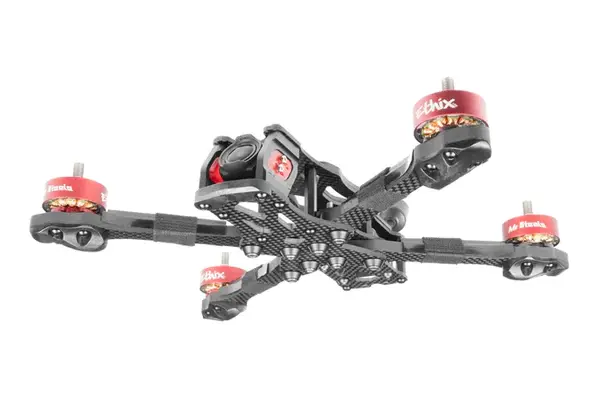
The ImpulseRC Apex is considered by some to be the best freestyle frame you can buy today. It’s tough as nails, and its reputation for having superior vibration characteristics was recently objectively confirmed by the aerospace materials engineer Chris Rosser.
Why doesn’t everyone fly the Apex? It’s heavier than some of the alternatives (although this does increase its durability). And it’s one of the most expensive 5” frames you can get.
The latest revision of the Apex, the Apex Evo, updates the design to fit the O3 air unit and camera. The new metal front end has vibration-isolation for the FPV camera, which helps the O3’s image stabilization work its best. Of course, the frame can be used with standard 19mm wide FPV cameras too.
Find this product at these vendors:
FLYFISHRC
VOLADOR VX5
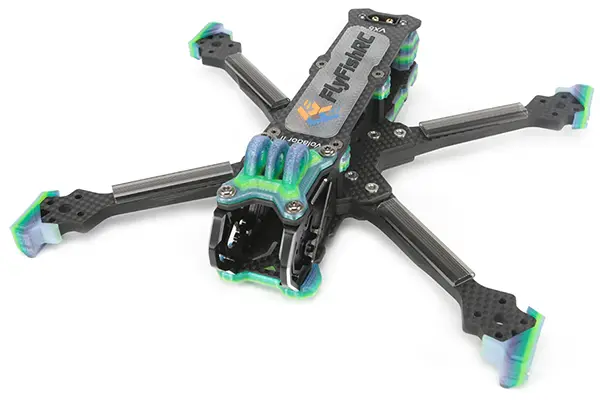
The Volador VX5 is a deeply thought-out, well-engineered 5” freestyle frame. Everywhere you look, there are little touches that show the designer was really thinking about how to make the frame better, and not just copy-pasting somebody else’s design. There’s a channel underneath the rear plate where you can tuck the XT60 wires, for example. A hard-mounted XT60 connector (included with the frame) reduces the likelihood of chopping the battery wires. Ample 3D prints allow the frame to accommodate almost any hardware.
But some people will find the frame over-engineered and cumbersome. There are SO MANY PARTS. You’ll probably need to refer to the assembly instructions the first time you put it together. And considering its weight, it’s only average in terms of durability. If you prefer bare-bones simplicity, this isn’t the frame for you.
Either way, you can’t disagree with the price. At the time of writing, it’s about $65, which is an incredible value given the quality of the parts and the sophistication of the frame.
Find this product at these vendors:
TBS
SOURCE ONE V5
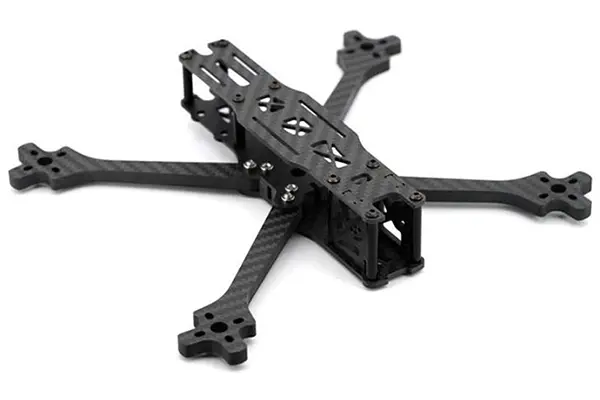
The Source One is one of the best values in FPV frames. It’s community-designed and all the CAD files are open-source and available for anyone to manufacture. As a result, The Source One is one of the least expensive frames you can get and is available nearly everywhere. (You could even cut it yourself if you have a CNC machine!)
While the Source One will get the job done, it’s obviously been manufactured to a price. It’s a sparse and utilitarian frame, but if you’re on a tight budget, it’s a great choice (and no guilt over buying a “clone”).
Find this product at these vendors:
QUADMULA
FREESTYLE-5
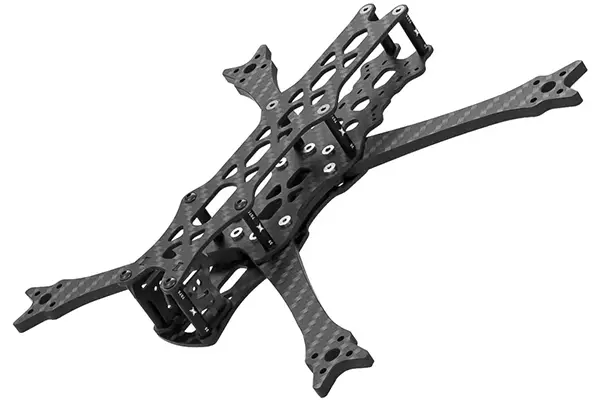
The Siren gets a place on this list because of its versatility and well-thought-out design. It’s not perfect, but it’s got enough going for it that some people are going to love it. It can mount almost any video transmitter and camera you prefer, even large digital ones; and there are clever 3D prints to keep things clean and tidy (we love the dual capacitor mounts).
There are four versions of the Siren F5. The “standard” one has a single-piece bottom plate with 25mm height through the entire length of the frame. This version can fit up to 5.5” props, and those using 5” props will appreciate a little extra room between the body and the props (fewer chopped battery leads). The “split” version splits the bottom deck similar to frames like the QAV-S and the Apex. This means the middle and rear of the frame have shorter standoffs, for a more compact build. Both the “split” and the “standard” versions are also available in a “mini” version which has shorter arms and is lighter weight. The “mini” only fits up to 5.2” props, but otherwise shares the features of the larger version.
The “standard” Siren frames weigh around 105g, and the “mini” around 95g, which is extremely light for a freestyle frame. Lighter builds can be more nimble and fly longer. They have been carefully designed for stiffness and resonance, so they should fly well on default PIDs, and those who push PID tuning the limit will be able to get a lot more out of these frames. However, lightweight freestyle frames are not the most durable. If you fly hard and crash a lot (especially into concrete or asphalt), this may not be the frame for you.
Most complaints about the Siren frames center on durability. The standoff screws are M2 size, with a vibration-isolating “sock” over them to bring them up to the standard M3 diameter. M2 screws are much more likely to bend in a crash, and most FC and ESC already have vibration-isolating “gummies”, so many people would prefer this frame come with M3 stack screws. Unfortunately, this isn’t possible without modifying the frame.
The frames also don’t have mounting for 20mm FC/ESC. A larger 30mm ESC hangs out over the hourglass shape of the frame, and some users complained that this caused the ESC to take more hits and die sooner.
Find this product at these vendors:
MOTORS
One of the biggest debates in FPV right now is whether beginners should choose 4S or 6S batteries. In my opinion, 6S has a small performance advantage, but it’s a bit more expensive and more likely to blow ESC’s when pushed hard. For five-inch freestyle, if you go with 4S, choose a motor between about 2300 kv and 2700kv. If you go with 6S, choose a motor between about 1600 and 1800 kv. Lower kv motors will make less power, but have longer flight time and be easier on the battery.
AOS SUPERNOVA 2207 / 1980KV
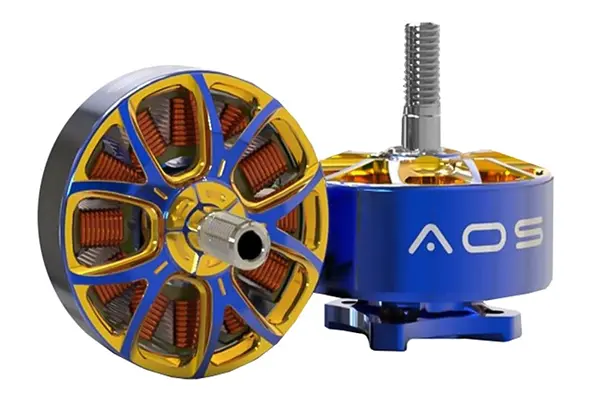
Chris Rosser, founder of AOS, set out to make the lightest, most powerful, most efficient motor in existence. He found a piece of software that simulates the electromagnetic fields inside a brushless motor. Then he designed an AI front end that changes the parameters of the motor over tens of thousands of generations until it finds the perfect design to produce the desired outcome.
The result is a motor that when compared to motors of similar weight, produces 33% more torque, 18% more thrust, and is 4% more efficient. That’s not speculation. It’s a fact.
The main innovation of the AOS Supernova is a semi-hollow stator. Chris found that the magnetic flux was weak near the center of the stator, and didn’t contribute much to the motor’s performance. By removing this material, he was able to make a bigger motor without increasing its weight.
You see, this isn’t really a 2207 motor. It’s actually closer to a 2308. And, compared to other 2308 motors, its performance isn’t as remarkable. But those motors are all 10-ish percent heavier! So what you’ve got here is the performance of a 2308-ish motor, for the weight of a 2207 motor.
The big question is, do you need it? Because at around $27 each, these are some of the most expensive motors in this class. And if anybody would benefit from increased performance, you’d think it would be racers, but none of them seem to have picked up this motor. Maybe the message is that such a perfect motor will never be truly appreciated in its time. Or maybe the message is that a “typical” 2207 motor for $22 is enough to satisfy most people.
Find this product at these vendors:
FPVCYCLE 25MM IMPERIAL

People kept telling me that I had to try this motor. I’d heard it all before. But they were right. The FPVCycle 25mm Imperial is a truly special and unique motor for freestyle. It’s powerful and punchy, sure. But where it really excels is low throttle response, such as when you dive down a building face and then need to quickly and smoothly stop your fall to hit a gap at the bottom of the building.
Kabab has kept the exact dimensions of the motor secret, but it’s rumored to be approximately 2506 in size. And somehow, the weight of the motor is only around 33 grams, the same as a typical 2306 motor.
This motor works great with almost any five-inch prop, but Kabab recommends a lower-pitch prop for maximum control. If you prefer the thrust and punch of a high-pitch prop, the motor can absolutely handle it. Whatever prop you choose, be sure to keep AUW low (Kabab recommends below 670g for best performance). If your AUW is closer to 750g, consider using a slightly larger battery (such as 1250 mAh 6S instead of 1100 mAh) to handle the amp draw.
Find this product at these vendors:
EMAX ECO II 2306
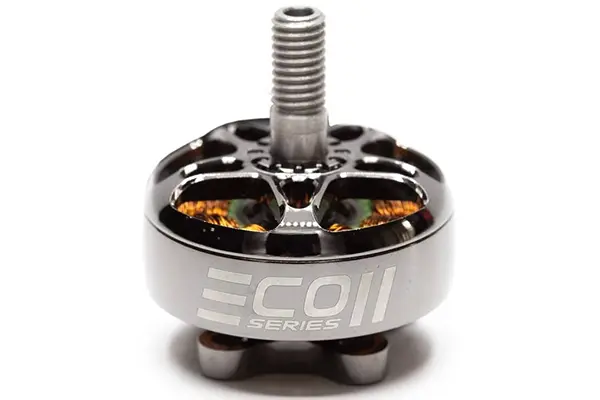
Emax is seriously messing up the whole FPV motor market with their Eco II line. As far as I can tell, they are making a $22 motor and selling it for $12 just because they want to be taken seriously as a motor manufacturer. I have no idea what the actual motivation is, but the Eco II is a seriously great value. It even has premium EZO bearings (an area where other budget motors often skimp).
At the time of this writing, the Eco II comes in only three sizes: 2306 and 2207 ideal for 5″ or maybe 6″ props), and 2807 (ideal for 7″ props). For 5″ props, choose 1700kv for longer flight time on 6S batteries, 1900 kv for more power on 6S batteries, or 2400 kv for 4S batteries. For the 2807, choose 1300 kv for long-range cruising on 6S batteries, 1500 kv for a bit more power on 6S, and 1700 kv for 4S, or for 6S builds intended for aggressive freestyle.
If the Eco II is available in a size that you want, from a store that you want, it’s hard to argue that you should buy anything else. Nearly everything else in this price range is inferior. And motors that cost twice as much may be better, but are they twice as good? Especially if you’re just going to destroy them in a crash.
Find this product at these vendors:
XING 2 2306

If the Emax Eco II line delivers $20 motor quality for $12, then the iFlight Xing line delivers $27 motor quality for $20. Everything about Xing motors is top of the line: single-piece curved bell in 7075 aluminum for maximum durability; center-slotted N52H curved magnets for maximum responsiveness; NSK bearings; titanium alloy shaft; and a proprietary o-ring between the bearing and the bell to help protect the bearing from impacts and smooth out vibrations.
The Xing2 is a great all-round choice for freestyle.
Find this product at these vendors:
NEWBEEDRONE FLOW 2306.5 V2
1850KV / 2450KV
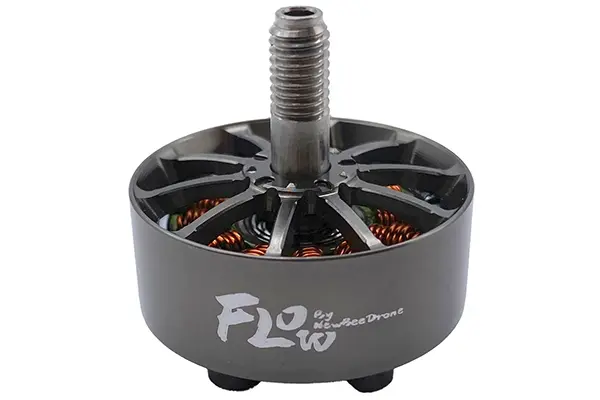
The NewBeeDrone Flow is another entry in the budget freestyle motor category. Newbeedrone regularly sells it in a “crazy deal” of eight motors, with a price working out to around $15 per motor. These are solid motors for $15 and should be considered as an alternative option to the Emax Eco. One catch: they ship from the USA only, so if you’re not American, the shipping price probably will rule them out.
Find this product at these vendors:
T-MOTOR F40
PRO IV
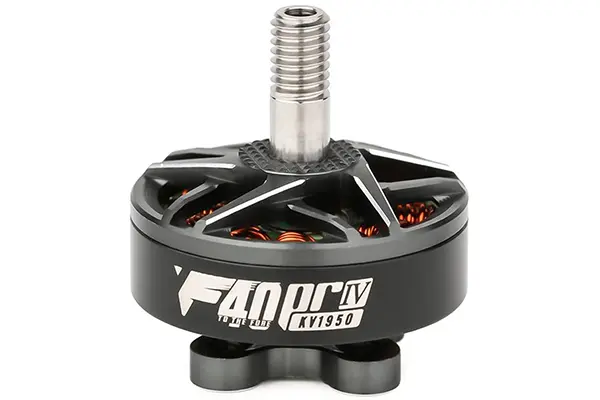
The T-Motor F40 Pro line used to be clearly the best freestyle motor you could buy. But it’s hard to justify the price of this motor, given how good some of the competition is. iFlight motors are equal or better in quality; FPVCycle motors have superior performance; Emax motors are a better value. The F40 Pro IV is a top-notch motor, and at about 30 grams, it’s lighter than almost any other motor in this class. But you really have to want that T-Motor pedigree to bring yourself to pay what T-Motor is asking for this motor.
Find this product at these vendors:
RCINPOWER 2107.5
1960KV / 2080KV / 2480KV
GEPRC SPEEDX2 2107.5
1960KV / 2450KV
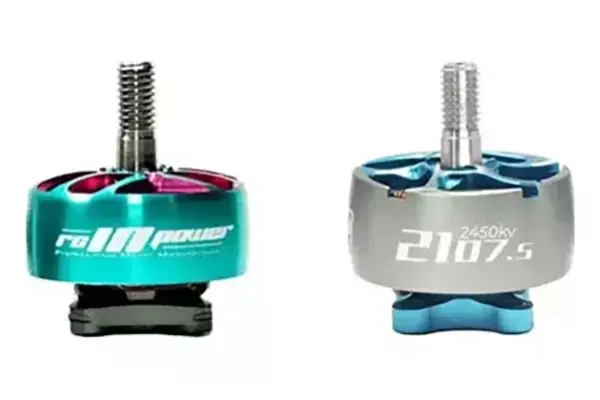
When I first saw this motor’s odd size, I thought it was just a marketing gimmick. 2207 is so played out! Let’s make a 2107! No wait! 2107.5! That’ll really stand out! But I was wrong. This motor is made by RCInpower, and they don’t play around when it comes to making great motors. So I went back and thought about the effect of a motor’s shape on its performance.
Wider motors have more surface area for better cooling. Taller motors are more responsive because their mass is closer to their axis of rotation. The volume of this motor is about the same as a 2207, but it’s narrower and taller. In other words, this is a slightly more responsive motor than a 2207, with slightly worse cooling.
And you know what? That’s actually a pretty good idea. Because freestyle pilots are seldom at full throttle for long periods of time, so the motors won’t tend to get very hot; and the additional responsiveness makes for better flight characteristics.
If you live somewhere with very hot temperatures, or if you spend a LOT of time at high throttle, then this isn’t the motor for you. If your current 2207 motors come down smoking, this isn’t the motor for you. But if you’re like most freestyle pilots, you should think about giving the RCInpower 2107.5 a try. (Or buy the GEPRC, which is basically the exact same motor, just with different branding.)
Find this product at these vendors:
The flight controller (FC) is the brain of the quadcopter. It receives your commands from the receiver and translates that into motor outputs that make the quadcopter fly. The electronic speed controller (ESC) takes the motor signals from the FC and does the actual work of making the motors spin.
For racing, ESC selection is most important. A racing-focused ESC has to be durable because racing drones crash a lot. At high speed. The recommendations on this page have all been vetted by actual pilots flying (and crashing) actual racing drones at the highest level.
Another concern is that the ESC fits inside the frame. Some racing frames are so compact that larger ESC’s literally don’t fit. The frames and ESC’s on this page should all work together.
Racing flight controllers also need to be durable, but they don’t take quite as much abuse as the ESC, so this is a little less of a concern. The simplest thing to do is to pick the same brand of FC as your ESC. This ensures that they can wire together without any annoying re-pinning of the cable that goes between them. Another concern is, if you use a digital video system like HDZero, that the FC has a plug to let the digital video transmitter plug directly into it without soldering.
JBF7 V2 (DJI READY)
30MM FC

MY VERY OWN…
I’m pickier about flight controllers than almost any other part of a quad. That’s why I’m so thrilled that RaceDayQuads invited me to design the JBF7 from the ground up exactly how I wanted it. I started with big, easy to solder to pads. The pad layout focuses on flexibility and ease of use. There’s an SD card slot for all the blackbox logging you could want. Beefy 5v and 9v voltage regulators mean you can power modern, high-powered digital video transmitters or even a few LEDs. And a detailed user manual with wiring diagrams and instructions for getting started.
V2 of the JBF7 adds several much-requested features. Now the FC has a USB-C plug. It’s got an onboard barometer and (FINALLY!) you can run iNav on it if you want. There are status LEDs that let you easily confirm the function of the voltage inputs and outputs. You can switch the video transmitter power on and off using an aux switch on your controller. And we added plugs for all the major features if you prefer not to solder directly to the FC.
Like many FC today, the JBF7 has switched to the BMI270 gyro. Although this gyro can only run at 3.6 kHz (which is, I admit, less than 8 kHz), it has been tested to perform as well or better than the ICM gyros that were on the previous version of this board.
Find this product at these vendors:
SPEEDYBEE F405 V3 FC & 50A ESC
(DJI READY) / 30MM STACK
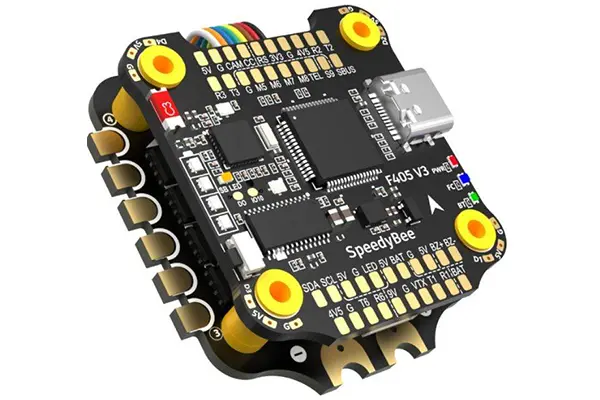
The Speedybee F405 stack might be the best value FC/ESC stack today. Start with the price. You get an FC and ESC together, for the price of most other FC alone. And the crazy thing is, you barely give up anything in terms of features, performance, and build quality. The layout and features of this “budget” FC are almost identical to Speedybee’s premium offering. They both have built-in Bluetooth for wireless configuration with the Speedybee phone app. They both have a built-in LED readout that shows whether your battery is charged or discharged. And despite the fact that this FC has an F405 processor, it’s got plenty of UARTs broken out for all your peripherals. It’s even got an SD card so you can log blackbox data for dayyyyyys. Because the F405 processor is slower, you may not be able to run Betaflight at the highest possible loop rate, but chances are, you’ll never notice the difference.
The ESC runs BLHeli_s firmware, not BLHeli32. That means you won’t be able to use features like bidirectional dshot or variable PWM frequency. Performance out of the box will be fine, and you can flash the BlueJay firmware to the ESC if you want to unlock those features.
Given how much I know the components on this FC must have cost, I don’t understand how Runcam manages to sell it at this price and still make a profit. When it first came out, I waited a few months to find out if there would be performance or durability issues. But so far, it seems to have passed the test. If you can find this FC in stock, it’s probably the best buy for the money.
Find this product at these vendors:
T-MOTOR F7 HD & F55A PRO II (DJI ONLY)
30MM STACK
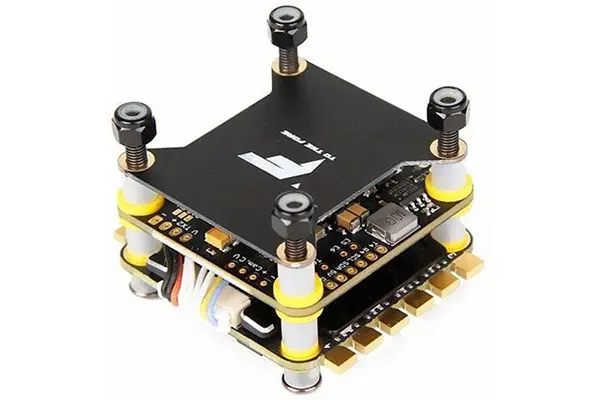
The T-Motor F7 is a high-quality flight controller with all the features you might expect. But what really stands out in this combo is the F55A ESC. This is one of the most durable, reliable ESC’s you can buy today. I won’t go so far as to say it’s indestructible, but it’s about as close as you can get in this hobby.
Find this product at these vendors:
HOBBYWING XROTOR CONVERTIBLE
30MM F7/60A HD STACK (DJI READY)
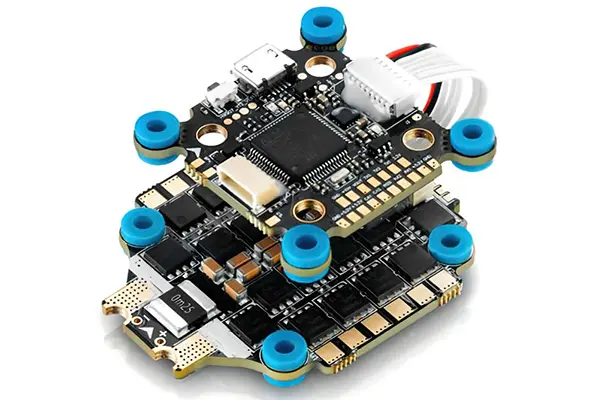
Hobbywing has always made some of the most reliable ESC’s in the FPV market. Lately, they’ve started stepping up their FC game as well. This stack starts with a BLHeli32 ESC, so you’ll get all the latest features like variable PWM frequency and startup music. The 60-amp rating is far more than most will need, up to about 7″ props. It has a 12v regulator to power your video transmitter (whether analog or DJI), including an onboard pit switch, which allows you to switch the vTX off remotely if you want to power it up without interfering with your friends. It’s even got a built-in camera switcher, so you can view two different cameras (analog only) such as one forward and one rear or downward facing.
One drawback of this FC is its compact size. It’s designed with both 30mm and 20mm mounting holes. The 30mm holes are on break-off tabs. This means that the FC is basically 20mm in size, which severely limits the available space on the board. As a result, there are small and limited solder pads, and some resources are only available in plugs. This approach is confusing since the ESC has only 30mm mounting holes, so if you’re buying the FC and ESC together, you’ll never use the 20mm holes.
Despite this quirk, the Hobbywing Xrotor Micro F7 is a great FC at a decent price, paired with an exceptionally good ESC.
Find this product at these vendors:
T-MOTOR MINI F7 HD
20MM FC
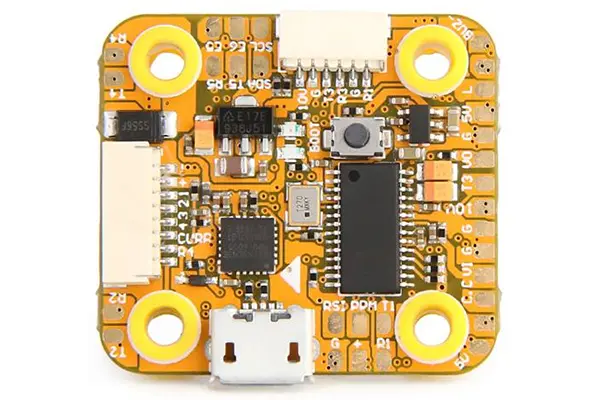
If you look closely at this flight controller, you might guess that it’s actually made by Aikon and sold under T-Motor’s branding. The layout is very similar and the features are nearly identical. No matter who makes it, T-Motor has a great reputation for quality and performance. But mostly, I’m including it as an alternative in case the Aikon is out of stock.
If you go with this FC, the recommended ESC is the F60A 8S. Just like with the FC, we suspect this is actually designed and/or manufactured by Aikon, and that’s a good thing. This is as close to bulletproof as a racing ESC can get.
Find this product at these vendors:
HOBBYWING & XROTOR STACK
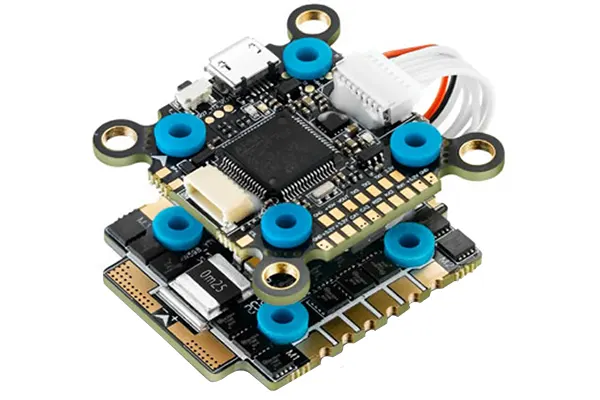
https://www.hobbywingdirect.com/products/combo-xrotor-stack-4in1-esc-fc?variant=39376594403443
The Hobbywing Xrotor Stack has become the standard for open-class FPV racing. Hobbywing has long been known for their excellent ESC’s. The 20mm FC comes with a plug that makes installation of the HDZero video transmitter easy. The FC has a dedicated 12v voltage regulator, which is nice if you’ve got an older video transmitter that doesn’t work from 5v. After the installation of the receiver and digital vTX, the FC will have one spare UART available if you want to add a GPS or some other type of accessory. It also has a vTX kill-switch to power down your analog vTX during team racing or when working on the quad in the pits.
The Hobbywing stack can be purchased with either a 40A or a 45A ESC. The 40A ESC is a lot cheaper, while the 45A is more durable, but a lot pricier. Most racers today run the 40A. Also, don’t let the fact that the Hobbywing is “only” rated for 40A throw you off. Real-world results speak for themselves, and show that this ESC is more than up to the abuse of top-level racing.
Find this product at these vendors:
FOXEER F722 V4 & V4 PRO MINI FC
FOXEER REAPER F4 45A / 60A MINI ESC FC

This is the FC if you want something inexpensive that will get the job done. What’s it give up to get the price down? It’s only got four UARTs instead of five; it’s only got a 5v regulator, so your vTX needs to run on 5v if you want the cleanest power to your video transmitter, and it doesn’t have a plug for a digital video transmitter (but you can still direct-solder if you prefer). I have literally talked to racing pilots who reject this FC because they don’t want to solder a vTX to all ten of their racing builds. I don’t judge.
This FC comes in two versions: a standard and pro version. The difference is the pro version has a “real-pit” function that can completely power down the vTX when you’re not using it. The pro version also has more solder pads, but as a tradeoff, it hangs out past the standoffs slightly compared to the standard version.
I recommend pairing this FC with the Foxeer Reaper ESC. The Reaper has been tested and proven by racers since it was released, and it’s extremely durable, especially for its price. The 45 amp version of the Reaper is good, but for modern high-kv 6S builds, the 60A ESC will be more durable.
The 60A Reaper comes in two form factors: square and slim. The Square is shorter front-to-back so it’ll fit between the standoffs of tight frames, but it is wider, so it hangs out a little more over the sides of the frames. The Slim is thinner side-to-side but a little longer front-to-back, which means it won’t fit between the standoffs of some frames, and even if it does fit, there’s an increased chance of damage if you bend a standoff. The square seems to be out of stock a lot of places, so you may need to get the slim if you want this ESC.
Find this product at these vendors:
REDUX32 F4 NANO
50A V2 20X20 ESC
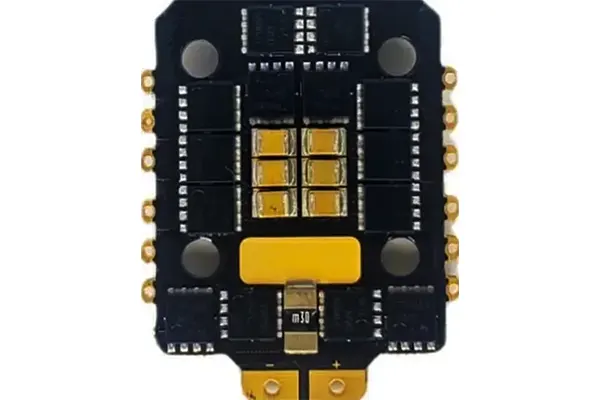
Unlike the other entries, this one is going to start with the ESC, not the FC. Redux Air makes what might be the toughest, highest-performance 20mm ESC available today. It uses the same larger, higher-rated FETs used on 30mm ESC’s. And somehow, they managed to shrink it down from its predecessor so it’s about the same size as other 20mm ESC! In my opinion, this is one of the best 20mm ESC’s you can buy today. If you can find it in stock.
This ESC can be paired with almost any FC, but you will probably have to re-arrange the order of the wires in the harness connecting them together.
Find this product at these vendors:
Every FPV aircraft has a camera and a video transmitter to send the camera feedback to the pilot. Which camera and video transmitter you choose depends on which video system you’re using. Video systems are divided into two categories–digital and analog–and we have a page with recommendations for both.
If you’re using a digital video system (DJI, Walksnail, or HDZero), CLICK HERE.
If you’re using an analog video system for freestyle or cruising, CLICK HERE.
And if you’re still not sure which is best for you, here’s a video to help you decide:
Batteries for 5” freestyle will almost always be 6S or 4S voltage. 6S offers slightly better performance especially towards the end of the pack, where it seems to feel like it has less voltage sag. (Be careful, as it’s easy to over-discharge 6S packs by not realizing they’re about to die.) 4S is slightly less expensive and less likely to fry ESC’s. Most pilots today are flying 6S, so if you’re on the fence, that’s probably the way to go.
GNB (GAONENG)
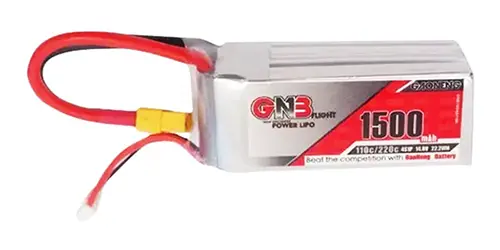
Find this product at these vendors:
Purchase at Banggood – 1500 mAh 4S
Purchase at Makerfire – 1500 mAh 4S
Purchase at Banggood – 1050 mAh 6S
Purchase at Banggood – All Other Sizes
Purchase at Makerfire – All Other Sizes
Purchase at NewBeeDrone – All Other Sizes
CNHL G+ SERIES
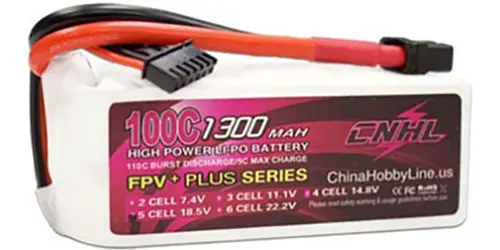
Find this product at these vendors:
Purchase at GetFPV – 1300 mAh 4S / 1500 mAh 4S
Purchase at Amazon – 1300 mAH 4S
RDQ SERIES (RACEDAYQUADS)
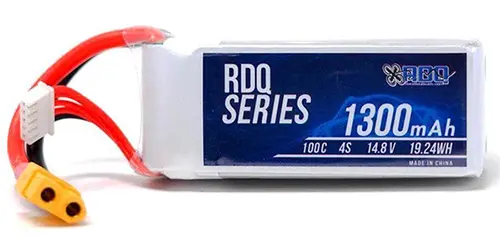
Find this product at these vendors:
Purchase at RaceDayQuads – 1300 mAh 4S
Purcahse at RaceDayQuads – 1500 mAh 4S
Purchase at RaceDayQuads – 1000 mAh 6S
All of the packs listed above give good performance at a reasonable price. Choose the smaller packs if you want a lighter, more agile quad, with a slightly shorter flight time; choose the larger packs if you prioritize flight time over handling.
TATTU R-LINE 4.0
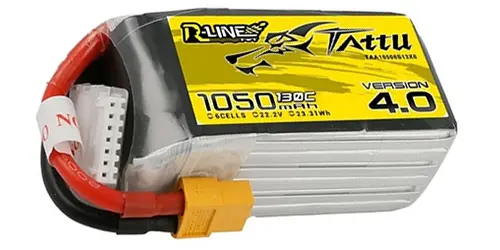
Tattu R-Line is some of the best batteries you can get. And the price reflects it. Given the chances of destroying a battery in a crash, you really have to ask yourself whether the additional performance of a premium battery is worth the price. Personally, I run budget packs and I’m happy with them, but if you want the absolute best performance, or if you’re very weight-sensitive, you won’t go wrong with the R-Line 4.0.
Oh by the way: it seems like almost nobody wants to carry the 4S version of this pack. I guess stores think all the high-end buyers are using 6S.
Find this product at these vendors:
Purchase at RaceDayQuads – 1050 mAh 6S
Purchase at GetFPV – 1300 mAh 4S / 1050 mAh 6S
Purchase at NewBeeDrone – 1300 mAh 4S / 1050 mAh 6S
Purchase at Rotor Riot – 1300 mAh 4S / 1050 mAh 6S
Purchase at ReadyMadeRC – 1300 mAh 4S / 1050 mAh 6S
Purchase at Banggood – 1300 mAh 4S / 1050 mAh 6S
Purchase at Makerfire – 1300 mAh 4S / 1050 mAh 6S
MR. STEELE THUNDERPOWER 1100
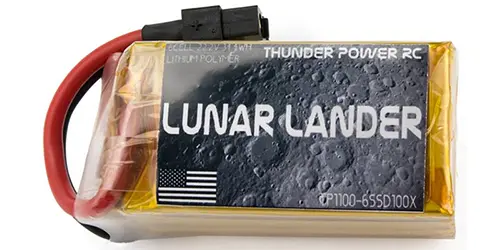
The specifications of this pack seem to defy physics. It’s an 1100 mAh 6S pack that weighs under 180 grams. I don’t know how Thunderpower has pulled this off, but whatever they did must have been difficult, because this is also an incredibly expensive pack. If you’re trying to shave every possible gram off of your build, this is the pack you’ll buy.
Find this product at these vendors:
CNHL SPEEDYPIZZA SERIES
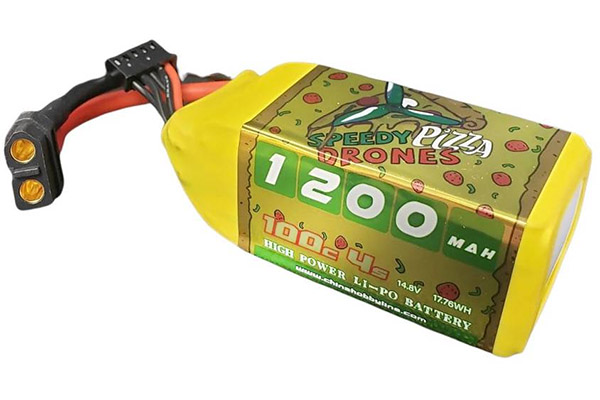
Find this product at these vendors:
Purchase at RaceDayQuads – 1200 mAh 4S / 1200 mAh 6S
Purchase at GetFPV – 1200 mAh 4S / 1200 mAh 6S
T-MOTOR 4943 & AXIS 4943.5
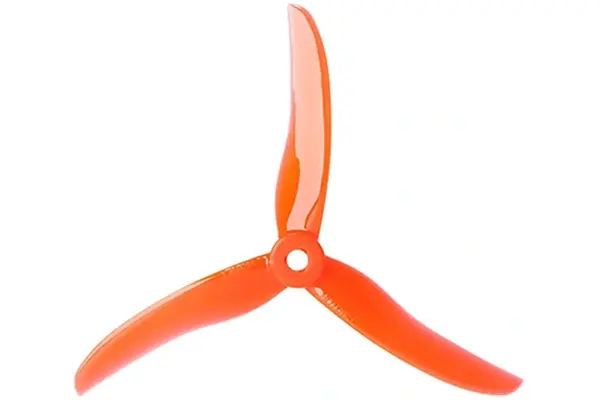
SOMETIMES SMALLER IS BETTER?
Everybody seems to want MORE all the time. These props answer the question: what if LESS is better? These props are 4.9″ in diameter, which means yes, they make a little less thrust than a 5″ or 5.1″ prop. But they are significantly lighter, and that means they’re more responsive and smoother in flight. The reduction in thrust also improves throttle resolution at the expense of top-end power. These props are particularly suited to very light 5″ builds (under 650 grams) which can feel floaty on larger props. They’re also great if you’re running just a little higher kv than is ideal.
Find this product at these vendors:
ETHIX SERIES
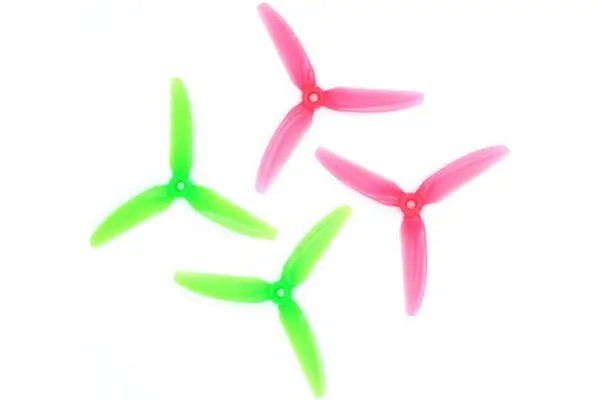
FOR LIGHTWEIGHT FREESTYLE BUILDS
I always thought these props were overrated until I tried them on Mr. Steele’s actual quad. Then I got it. These props are terrible on heavier freestyle builds. That’s not what they’re made for. But on lightweight freestyle builds (5″ quads under 650 grams All Up Weight) they come alive.
Have you ever dove over an obstacle and then needed to catch yourself precisely at the bottom to fly through a gap? That’s where these props excel. You can find the exact throttle position you need quickly and precisely, without over-shooting or pulsing the throttle. They’re also easy on the battery for extended flight time. The tradeoff is that they lack the razor-sharp cornering and neck-snapping acceleration you get with higher-pitch props.
These props are best when used with a wider motor like a 2306. When used with a 2207 or 2208 motor, the taller stator’s non-linear throttle curve doesn’t fit as well with the Ethix props’ low-throttle linearity and precision.
Steele recommends the S3 for quads between 500-650g, up to about 3000′ above sea level. The S4 gives a little more thrust, especially suited for altitudes up to 10,000′. The S5 has the highest pitch and is for heavier quads up to 750g (such as carrying a GoPro). The S5 is also 18% gray to make it less visible if it’s in the camera’s view.
Find this product at these vendors:
GEMFAN HURRICANE 51477
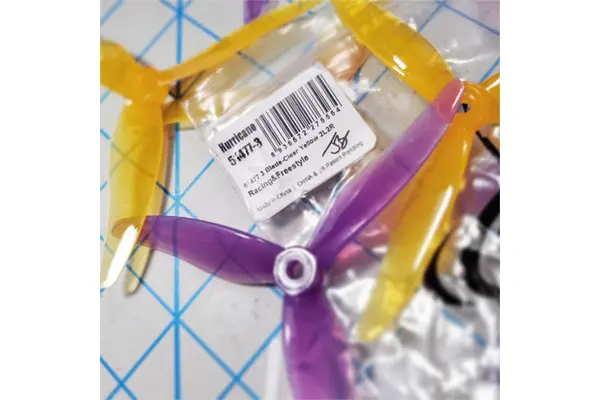
MY PERSONAL FAVORITE
The Gemfan 51477 is the perfect prop to pair with larger motors like 2407 and 2208, or even bigger!
Many freestyle pilots today are moving to larger motors, which allows the use of heavier props without compromising handling. This gives the best of both worlds: punch, speed, and smoothness. But only if the motor is paired with the right prop. A light prop doesn’t demand the torque that the bigger motors put out, and it doesn’t make enough thrust to counteract its weight. Too heavy a prop drives amp-draw through the roof, shortening flight times and killing batteries.
The Gemfan Hurricane 51477 hits the sweet spot between those extremes. It’s got enough pitch to make the most of the motors’ torque, without going overboard like the 51499 might. And its unique blade profile gives reasonably good control even at low throttle (something high-pitch props are often bad at.)
Of course, I also love to run these props on smaller motors like 2207 and 2306. It makes great power, but the reduced torque of the motor means the prop isn’t as smooth and responsive as it is on larger motors.
Find this product at these vendors:
GEMFAN HURRICANE 51466 / 51499

FAST, PRECISE, AND DURABLE
I first came to love the Hurricane 51499 prop when I was searching for the best prop for my JB2407 motor. Because my quad was heavier, it was loose and imprecise in corners. The 51499 has razor-sharp handling in corners and plenty of speed in the straights.
Although the Hurricane line was designed for racing, I like them for freestyle. They are not as smooth and controllable in the low end as some pilots would prefer. This is a great prop for somebody who wants to punch the throttle and get slammed back in their seat.
The Hurricanes are also designed to be durable. The hub is reinforced so that, after a crash, you can just bend them back and keep flying. This is advertised as making them suitable for racers, but I know freestyle pilots will appreciate it just as much.
If you have big, torquey motors and you want the most thrust and sharpest handling, choose the 51499 size. But you’ll need really healthy batteries or a really lightweight quad in order to keep your flight time up. The 51466 version is slightly easier on the battery and may be a better choice for smaller motors, or higher-kv motors.
Find this product at these vendors:
GEMFAN HURRICANE F3S / F4S
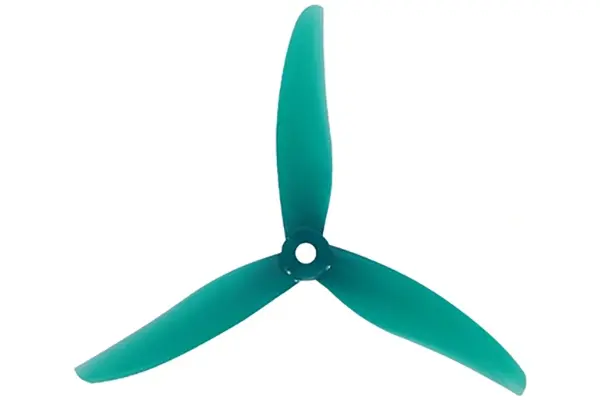
MORE EFFICIENT; LESS RESPONSIVE
The F3S and F4S are Gemfan’s latest generation of freestyle props. They’re 5.1″ in diameter, which lets them use a lower pitch without giving up thrust. The lower pitch helps with smoothness that freestyle pilots value and improves efficiency, but can make ultra-light builds feel too floaty. Like all freestyle props, they’re designed with durability in mind, so you can (hopefully) fly back home after a crash.
Pick the F3 if you’re using higher kv motors and/or value smoothness, predictability, and responsiveness over top-end power. Pick the F4 if you have lower kv motors and need more thrust, or if you just want a little more power.
Find this product at these vendors:
FPVCYCLE “CAP/DIODE SYSTEM”
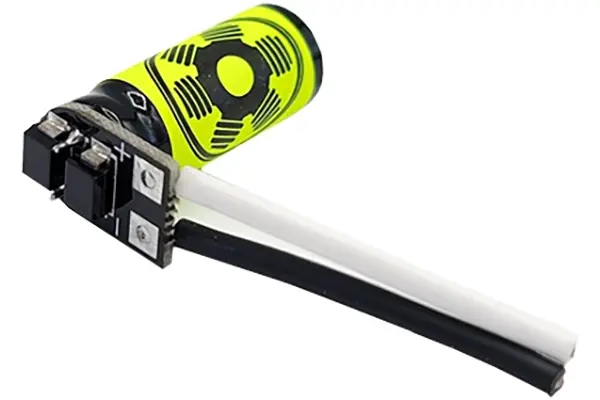
Everybody knows that putting a capacitor on your build gives cleaner video and helps protect your ESC and other electronics from damaging voltage spikes. But capacitors can only do so much, and big, sharp spikes can still get through. Enter the TVS diode. A TVS diode chops the top off of voltage spikes, almost no matter how big they are.
So why don’t people use TVS diodes more often? Two reasons. First, you can usually get away without one. Capacitors do an ok job most of the time. Second, the specs for a TVS diode are a little more difficult to interpret than a capacitor’s, so it can be difficult to be sure you bought the right one.
That’s where this product comes in. The FPVCycle cap/diode system combines a capacitor and some TVS diodes into a single unit with pre-soldered wires. Just solder it to your ESC power pads and know you’re as protected as you can be from voltage spikes and electrical noise.
Find this product at these vendors:
FETTEC SPIKE ABSORBER
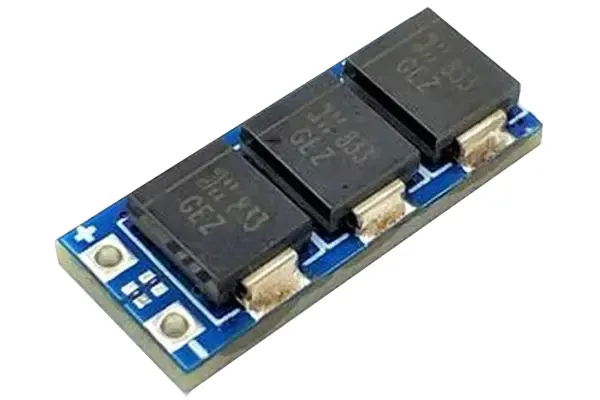
First, read the description of the FPVCycle cap/diode set, so you understand what a TVS diode is and why you need one.
The FETTEC spike absorber is just the TVS diode part of that, without the capacitor. Don’t go thinking you can omit the capacitor though! You’ve just got to provide your own. And you’ve got to solder on your own wires, while the FPVCycle one comes pre-soldered. And the FETTEC spike absorber is nearly the same price as the FPVCycle one. Just about the only thing the FETTEC product has over the FPVCycle is that it’s got three diodes, while the FPVCycle has two. Does that matter? I don’t actually know.
Bottom line: get the FPVCycle one if you can, but if it’s not available, the FETTEC is a fine alternative.
Find this product at these vendors:
RUSH POWER FILTER BOARD
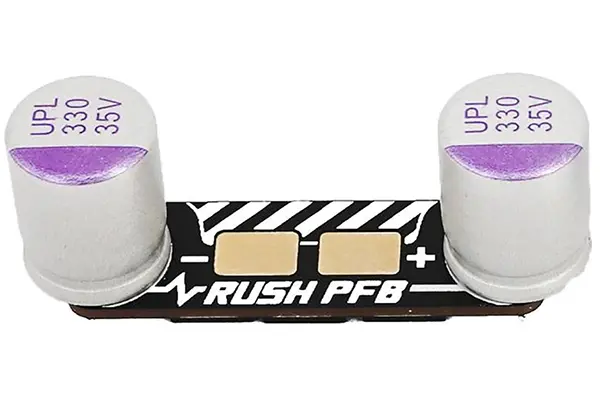
First, read the description of the FPVCycle cap/diode set, so you understand what a TVS diode is and why you need one.
The Rush power filter board includes a capacitor and TVS diodes, similar to the FPVCycle product. The main difference between them is the form factor. The Rush board is designed to be soldered underneath or on top of the XT60 pads of a Rush ESC. This clearly isn’t going to work for every ESC and every frame, but nothing’s stopping you from soldering wires to the Rush board and mounting it wherever is convenient. It’s definitely bigger than the alternatives though, and some builds will struggle to find a great place to mount it.
Find this product at these vendors:
FLYWOO M10
NEXT-GEN GPS MODULE
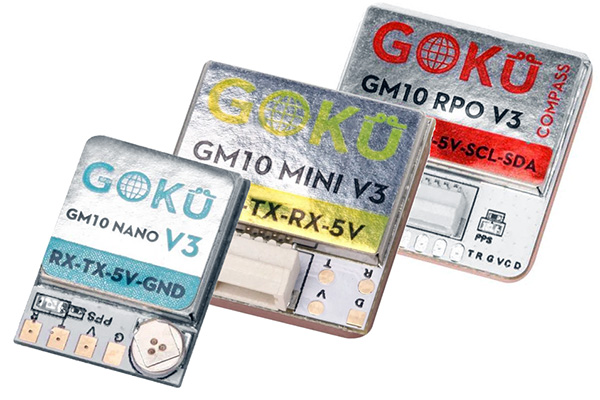
Until recently, most GPS receivers used on hobby drones had an M8 chip in them. The newer M10 chip in these GPS units can lock on to four of the global navigation networks at the same time. That means more available satellites overhead, faster lock time, and more satellites locked for more precise position data while in flight. In short, the M10 chipset is just better than the M8, and you should use it if at all possible.
Flywoo makes three units. The Nano is ultra-small and light, but its tiny antenna will make it perform a little worse. The Mini is the same size as the popular BN-220. The Pro has the largest antenna and is the only one with a built-in compass (magnetometer). All of them have battery-backup flash memory, which means their programming can be customized using the U-center application.
One note: Betaflight versions 4.4.1 and earlier have a bug where the FC does not properly configure the GPS for optimal performance. If you are using BF 4.4.1 or newer, you should manually configure the GPS parameters using the instructions in this iFlight blog post. The default GPS configuration may cause poor return-to-home performance and even premature disarms.
Find this product at these vendors:
MATEK M8Q-5883
GPS MODULE
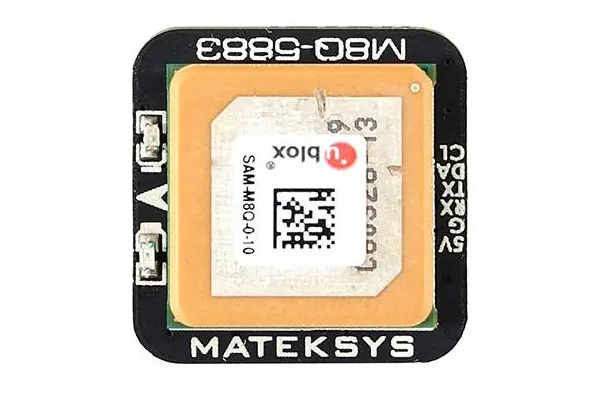
The GPS M8Q is one of the best-performing, full-featured GPS units you can put on a quadcopter. It’s got a built-in, low-noise voltage regulator, RF filter, and low-noise amplifier means the GPS unit gets the cleanest possible signals. Translation: you can lock more satellites, faster. It’s got a built-in compass as well as a GPS unit. And the included wire harness has high-quality silicone insulation, not the cheap plastic insulation used by most other GPS units.
Find this product at these vendors:
IFLIGHT M8Q-5883
GPS MODULE
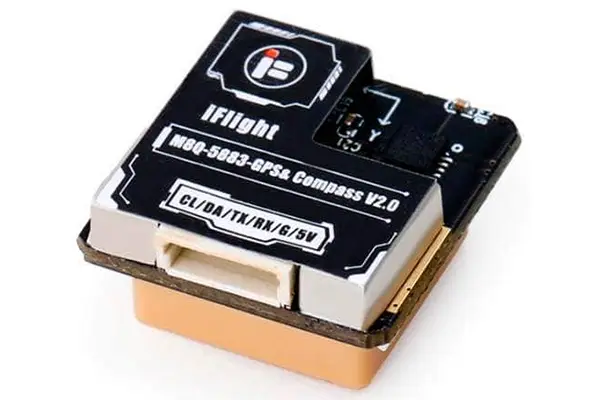
High-performing GPS units tend to be large. Which means most GPS units on small drones don’t perform very well. The iFlight M8Q is one of the best-performing tiny GPS units you can buy. It’s got a built in compass, as well as a low-noise amplifier for stronger GPS signal.
Find this product at these vendors:
BEITIAN BN-220
GPS MODULE
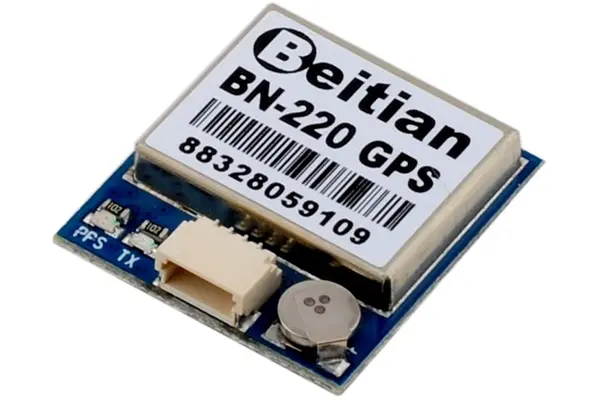
The BN-220 is probably the least expensive GPS unit you can buy. And its performance reflects it. In a perfectly clean environment, it performs well. But drones are not perfectly clean environments. They have a ton of electrical noise! Which means the BN-220 will often take forever to lock satellites, and when it does, it may not lock as many as you’d prefer. Frankly, there are a few people who think the BN-220 is not worth buying, but if you want to try to get into GPS assisted flight while spending the absolute least money possible, this is the one to get.
Find this product at these vendors:
VIFLY FINDER V2 &
VIFLY MINI
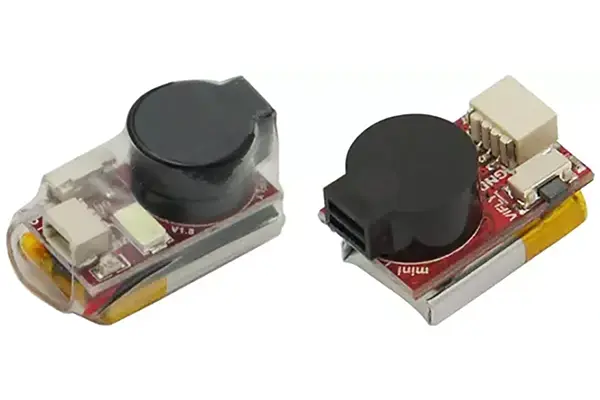
Let’s say you crash your quad somewhere and can’t find it. What do you do? Try to “home in” on the video signal? Beep the beeper? Maybe even arm the quad and listen for the sound of the props thrashing around in the brush. But none of that will help if your battery ejected in the crash and your quad is powered down.
That’s where the ViFly Finder comes in. It’s a super loud (up to 105 dB!) beeper with a tiny 1S lipo cell connected to it. A short while after the quad loses power, it begins beeping, and it doesn’t stop until you find it and disable it (or until the battery runs down). The Finder also acts as a normal beeper that you can activate with a switch on your controller whenever you want.
There are two versions of the Finder: the Mini and the Normal. The Mini is about 3g and its battery lasts about 7 hours. The Normal is about 5g and its battery lasts about 30 hours. In addition, the Normal has a light sensor that turns off the beeper at night. This avoids annoying your neighbors and wasting battery during time when you might not be looking for the quad.
Find this product at these vendors:
More FPV accessories can be found on our HD Cameras, Backpacks & Other Accessories page.




